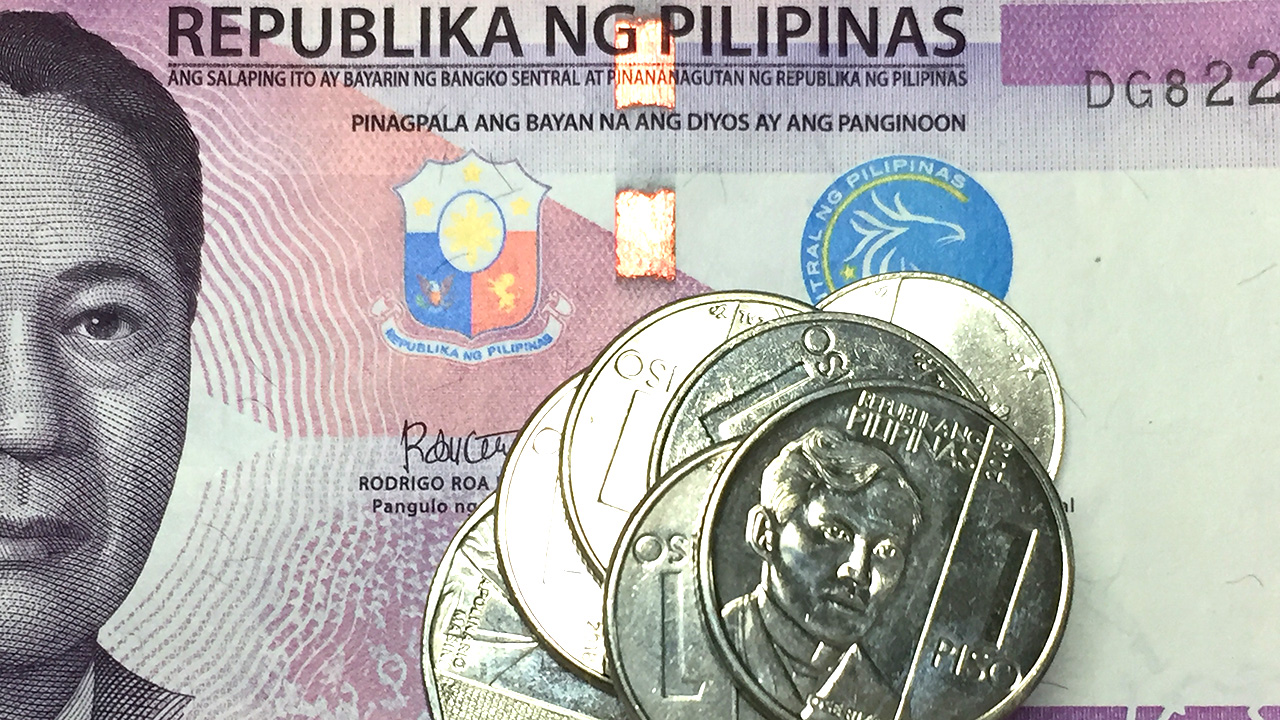Peso strengthens on US spending data

THE PESO inched up against the dollar on Monday as the March US personal consumption expenditures (PCE) price index posted a moderate increase.
The local unit closed at P57.675 per dollar on Monday, strengthening by 3.5 centavos from its P57.71 finish on Friday, Bankers Association of the Philippines data showed.
The peso opened Monday’s session weaker at P57.75 against the dollar. Its intraday best was at P57.60, while its worst showing was at P57.77 versus the greenback.
Dollars exchanged went down to $1.46 billion on Monday from $1.69 billion on Friday.
“The peso gained following the milder US PCE inflation report last Friday,” a trader said in an e-mail.
While the US Federal Reserve’s preferred inflation gauge was slightly faster than market expectations on a year-on-year basis, the monthly rate was broadly in line with assumptions, Rizal Commercial Banking Corp. Chief Economist Michael L. Ricafort said in a Viber message.
US monthly inflation rose moderately in March, but stubbornly higher costs for housing and utilities suggested the Federal Reserve could keep interest rates elevated for a while, Reuters reported.
The report from the Commerce department on Friday, which also showed strong consumer spending last month, offered some relief to financial markets spooked by worries of stagflation after data on Thursday showed inflation surging and economic growth slowing in the first quarter.
The PCE price index increased 0.3% last month, matching the unrevised gain in February, the Commerce department’s Bureau of Economic Analysis said.
In the 12 months through March, inflation rose 2.7% after advancing 2.5% in February. The increase in inflation last month was broadly in line with economists’ expectations.
Fed policy makers are expected to leave rates unchanged next week. The central bank has kept its benchmark overnight interest rate in the 5.25%-5.5% range since July. It has raised the policy rate by 525 basis points since March 2022.
Financial markets initially expected the first rate cut to come in March. That expectation got pushed back to June and then September as data on the labor market and inflation continued to surprise on the upside.
Excluding the volatile food and energy components, the PCE price index increased 0.3% in March after rising by the same unrevised margin in February. Core inflation increased 2.8% on a year-on-year basis in March, matching February’s advance.
Bangko Sentral ng Pilipinas (BSP) Governor Eli M. Remolona, Jr.’s statement on the regulator’s readiness to manage peso volatility if necessary also supported the peso on Monday, Mr. Ricafort added.
The BSP has enough foreign exchange (FX) reserves to stabilize the peso, Nomura said in a note on Monday.
“Overall, we remain bearish on peso and continue to see negatives including a weak balance of payments position on a widening current account deficit and strong local demand for FX,” Nomura said.
“We believe BSP is one of the few central banks in the Asia Ex-Japan region that has ample FX reserves to stabilize the peso for a prolonged period (if there is a desire),” it added.
It expects the peso to soften in the near term due to “asymmetric” data releases, it said.
“This is based on our view on long dollar positions/repricing of the US Federal Reserve and how the dollar will likely react more to slightly softer US data than slightly stronger,” Nomura said.
For Tuesday, the trader said the peso could weaken again due to a potentially softer manufacturing report out of China. The trader sees the peso moving between P57.50 and P57.75, while Mr. Ricafort expects it to range from P57.55 to P57.75 per dollar. — AMCS with Reuters



